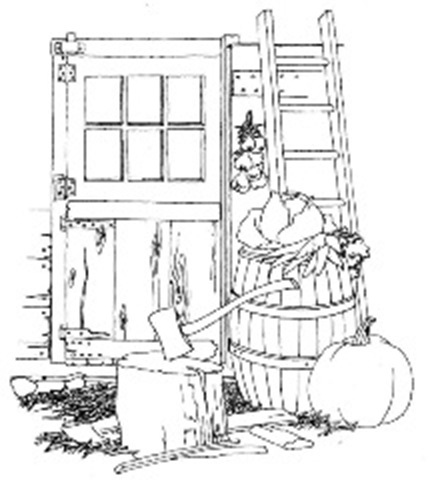
In milder climates, where fros’t is infrequent and doesn’t penetrate too deeply, vegetables can be kept in specially prepared outdoor locations. In colder areas, you’ll have to store the vegetables indoors as an extra precaution against freezing. In the directions for storing vegetables that follow, you’ll find the proper storage method for each vegetable.
Four vegetable groups
Where and how you store each vegetable will depend on how much or how little cold it can take and the amount of humidity it needs to keep fresh. Vegetables to be stored fall into four groups: cold-moist, cool-moist, cold-dry, and cool-dry.Vegetables that should be cold-moist stored make up the largest group, and include beets, broccoli, Brussels sprouts, cabbage, carrots, cauliflower, celery, turnips, and many others. These vegetables require the coldest storage temperatures — 32°F — and the highest humidity — 95 percent — of all vegetables that can be stored.
The second group of vegetables requires cool-moist: melons, peppers, potatoes, and green tomatoes. These vegetables can be kept at temperatures ranging from 38°F to 60°F and at humidity levels of 80 to 90 percent.
Dry onions and shallots require cold-dry storage temperatures of 32°F to 35°F and humidity of 60 to 75 percent.The cool-dry group is composed of pumpkin and winter squash, dried peas and beans, and live seeds, all of which must be stored at temperatures of 50°F to 55”F and at a humidity of 60 to 70 percent.
Vegetables in the cold-moist and cool-moist groups can be stored outdoors in a mound or barrel, or indoors in a specially insulated basement storage room that is partitioned off from the central heating area or a root cellar. Vegetables in the cold-dry and cool-dry groups can be stored indoors in a cool area of a heated basement, but they must be kept away from water that might condense and drip down from overhead pipes. Cold-dry storage can also be provided by a dry shed or attic, window wells, or cellar stair storage.The accompanying chart shows how vegetables in each of these four groups should be stored — at what temperature, at what humidity, and for how long. Any one of the storage methods discussed in this topic can be used if it supplies the necessary conditions of temperature and humidity. For some vegetables in the cool-moist group, the refrigerator is an ideal storage area. And when cold storage doesn’t add significantly to the length of time you can keep a vegetable from the cold-moist group, you may prefer just to refrigerate your crop, as detailed above.
